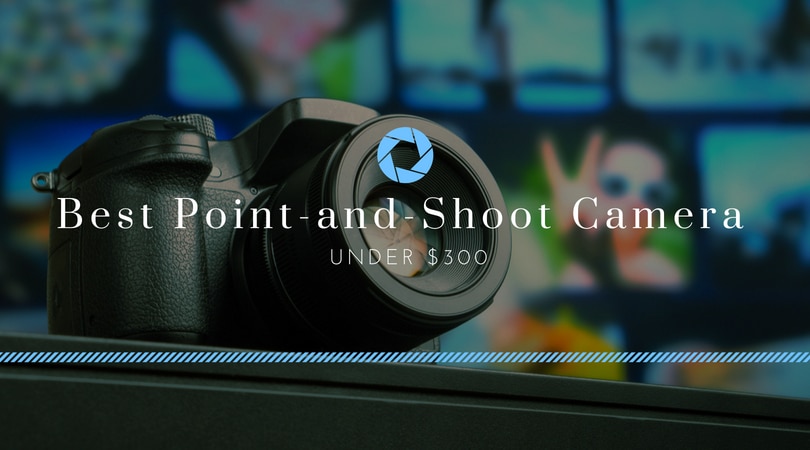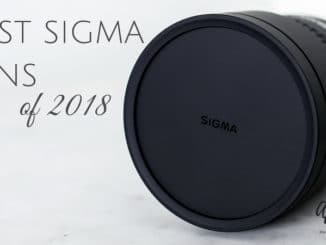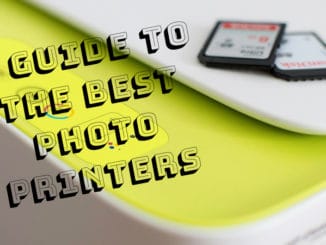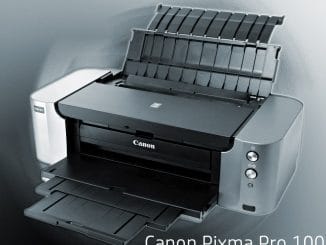 Point-and-Shoot cameras offer an excellent introduction to photography and also provide an option for smartphone shooters who are starting to look for more from their images. These cameras come in a variety of sizes ranging from not much bigger than a smartphone up to models that look like miniature digital single reflex cameras (DSLRs) or mirrorless cameras but are still small enough to fit in a bag or small backpack.
Point-and-Shoot cameras offer an excellent introduction to photography and also provide an option for smartphone shooters who are starting to look for more from their images. These cameras come in a variety of sizes ranging from not much bigger than a smartphone up to models that look like miniature digital single reflex cameras (DSLRs) or mirrorless cameras but are still small enough to fit in a bag or small backpack.
The distinguishing feature of a point-and-shoot camera is that it does not have interchangeable lenses. However, the built-in lens is of high quality and usually offers a wide range of focal lengths. They earn their designation with automatic focus and exposure modes that deliver consistently good results, leaving the photographer with nothing more to do than aim the camera and press the button.
That being said, you should also note that point-and-shoot cameras can also provide the full range of manual control offered by DSLRs or mirrorless models. These are the so-called “bridge” models, meaning that they provide a transition between the simple point-and-shoots and the fully-featured DSLRs and mirrorless cameras.
You may also see “super-zoom” cameras. These have an extended telephoto range (a big “X” number), giving the same long-range view as huge lenses on a DSLR. Super-zooms may or may not have the advanced controls of a bridge camera.
Many good choices are available in the sub-$300 range. We’ll give you a buyer’s guide and a few select models for your consideration.
Best Features for a sub-$300 point-and-shoot camera
The camera you choose will ultimately depend on your preferences and shooting requirements. A parent, grandparent, or traveler may well prefer a compact, pocket-sized model that is always handy and ready for those memorable moments. The images will be great for sharing on a screen or in small prints with relatives and friends.
On the other hand, someone who is looking for the quality to reach a wider audience and possibly make larger prints may prefer the performance and results from a bridge model.
What follows is a list of camera features to look for in a point-and-shoot camera. For models under $300, you may not find all of these attributes but look for as many as you can and consider which features you need most for the shooting you want to do.
Size/weight and portability: If you have strong needs or preferences for the size and weight of the camera, this spec will often determine the range of other choices available to you.
Megapixels: One of the first things you’ll see in the marketing hype is the megapixel (MP) count. We are well beyond the days of low-megapixel cameras with marginal quality. Today’s cameras all pack enough resolution for anyone’s basic needs.
The higher MP cameras sometimes skimp on other features. So, for example, if you see a 16 MP model with all of the other features you want and a 20 MP model that lacks some of these features, you will probably be well-served by the 16 MP model.
One advantage to consider for more megapixels is that you can crop a bit more into a photo, getting some enlargement of the image, with less loss of image quality.
Sensor Size: This is the physical size of the sensor, not the megapixel count. A larger sensor means larger pixels with better image quality, especially in low light.
Larger sensors also deliver better dynamic range, meaning that they capture a wider range of shadows to highlights in a single frame. We’ve probably all seen the classic image of someone next to a window where either the person or the scene in the window is exposed correctly, but not both.
A larger sensor will get you better results, but it is still effortless to exceed its capability here. Sensor sizes range in the following designations, from smallest to largest:
• 1/2.3″
• 1/1.7″
• 1″
• 4/3
• APS-C (slightly smaller on Canon than on Nikon)
• Full-frame
Lens range: Another big hype in marketing is the zoom range, or X number, of the lens. This relates to how much you can zoom into far-away subjects and get a large image. This is great for bird and sports photography, but not needed so much for kids and pets.
One thing to consider is that at high zoom ranges, the motion caused by jittery hand-holding is magnified and high shutter speeds are needed. Beware of this when shooting right after you down a double latte!
Image stabilization: This helps with the problem above of shaky hands, but it does not eliminate the problem. Virtually all point-and-shoot cameras today have image stabilization, and this should be a must-have item on your list of features.
ISO range: The ISO setting enhances the camera’s ability to take pictures in low light, and allows for faster shutter speeds in normal light. Increasing the ISO to gain these advantages does come with a trade-off.
The image will be noisier or more grainy at higher ISO settings. Check reviews on this feature if low light photography (nighttime, for example) or fast shutter speeds are important to you.
Screen: The features to consider here are the size and brightness of the screen. You will make your initial decisions about your images based on this view, so larger/brighter is usually better. If size and portability are important to you, you will need to go with a smaller screen.
Another screen feature to look for is swivel. This may not be common on the sub-$300 models but could be a big consideration if you like to do ground-level or above-head views.
Exposure controls: Most people are attracted to point-and-shoots for their ability to get great shots with no fuss overexposure. In this case, look for cameras with a wide variety of exposure presets.
However, for more experienced photographers who prefer the ability for more creative options, some models also feature manual, aperture priority and shutter priority modes.
Also, look for exposure compensation and control of the ISO setting. Even some cameras with only exposure presets will provide these means of tweaking the results from the camera.
Autofocus performance and burst speed: Point-and-shoot- cameras are not known for fast autofocus or the ability to fire many shots off in one second. If sports, bird, or other action-based photography is important to you, look at this spec carefully to determine if the camera will fit your needs.
Video: Virtually all cameras sold today can record video. You should be able to find a model that can shoot full HD (1080p). Also be sure that the camera records in a common, widely-used format such as mp4, and not a lesser-known or proprietary format.
Battery type and life: Does the camera need a proprietary battery or can it use commonly available AA or AAA? About how many shots or minutes of video can you get on a fully-charged battery? The need to carry extra batteries will factor into the portability of the camera.
Connectivity: Wifi connectivity is now a standard with most cameras. New on the scene is near-field connectivity (NFC) which simplifies connecting the camera to other devices. All it takes is literally a touch of a suitably-equipped smartphone or tablet. The first connection will require some security checks.
Other features: here are some other features you may look for in your point-and-shoot camera. Again, these may not be common in the under $300 range.
• Face detection
• Panoramic shooting
• HDR shooting
• remote control from smartphone or tablet (usually via a separate app)
• Weatherproof/weather-resistant
Recommended Point-and-shoot Cameras Under $300
We can cover first a few things that all five of these cameras share in common.
They all have 3-inch LCD screens.
Each model features WiFi connectivity and control with a separately-available app for a smartphone or tablet, as well as HDMI and USB ports to connect to computers and TVs.
Although exposure modes differ among the cameras, they all provide exposure compensation up to two stops lighter or darker in 1/3-stop increments.
The sensor size for all of these cameras is the same at 1/2.3.
Canon Powershot SX530
First up is the Canon Powershot SX530. This camera tops most of the basic specs compared to the other four models. It offers a big super zoom range and manual or semi-automatic controls for intermediate photographers who want more control over exposure, making it a good choice for a bridge camera for these photographers. There is very little not to like about this one, except perhaps the lack of a swivel screen.
Size/weight and portability: The SX530 is similar in shape to an interchangeable-lens camera but smaller, measuring 4.7 x 3.2 x 3.6 inches and weighing 15 ounces with battery and card installed. It uses a proprietary battery that is rated for 210 shots per charge, or 290 if the camera is in ECO mode.
Imaging: This is a 16-megapixel camera with 4608 x 3456 pixel images, maximum shutter speed 1/2000 sec, and able to shoot up to 10 frames per second. You can choose to shoot in 1:1, 3;2, 4;3, and 16:9 aspect ratios.
There are 17 exposure modes to cover just about any situation, and you can choose automatic application of up to 5 in-camera filters. This camera also offers manual, aperture-priority, and shutter-priority exposure controls for the intermediate or advanced photographer. The ISO goes up to 3200 in most cases with an optional 6400 low light setting.
There are eight image stabilization modes: normal, panning, macro, and tripod for stills or dynamic wide-angle, powered telephoto, macro, and tripod for video.
Lens: This is a longer superzoom at 50x, which is the equivalent of a 1200mm focal length on a full-frame DSLR. The lens has a maximum aperture of f/3.4 and features high-speed autofocus along with zoom framing at longer focal lengths to keep the subject properly framed. The lens can focus down to a distance of 0.4 inches.
Video: The SX530 records full HD 1080p video at 30fps in the mp4 format. The maximum clip length is 29 minutes with 1 hour possible at lower video quality settings.
Other: In addition to WiFi, this camera offers NFC for connection to compatible devices. There is an optional connect station available for easy transfer of images to a computer. The camera features a hybrid recording mode where a short video is recorded prior to a still image. These short videos are later automatically assembled into a highlight reel for the photo shoot.
- Powerful 50x Optical Zoom lets you capture the details that make your photography stand out
- Equipped with built-in Wi Fi and NFC to make wireless sharing of photos between compatible devices easy and convenient
- Fully compatible with Canon's photo and video storage device: the Canon Connect Station CS100. Focal Length 4.3(W) 215.0(T) millimeter (35 millimeter film equivalent: 24 1200 millimeter). Normal: 2.0 inch (5 centimeter) - infinity (W), 4.3 feet (1.3 meter) infinity (T). Auto/Manual: 0.0 inche (0 centimeter) infinity (W), 4.3 feet (1.3 meter) infinity (T). Macro AF: 0.0 inch 16 feet. (0 50 centimeter) (W)
- 16.0 Megapixel High Sensitivity CMOS sensor delivers state of the art imaging performance
- Full HD video at 30p for notably smooth and lifelike quality
Nikon Coolpix B500
Next, we’ll consider the Nikon Coolpix B500. It is almost a contender for bridge camera status but lacks advanced controls for exposure. However, this is perfect for those who want a super-zoom but do not want to fuss with settings too much. This model is a standout among the five models in that it offers a tilting screen to make low- or high- angle views easier and more comfortable to accomplish. It offers overall balance and versatility despite a lack of advanced features.
Size/weight and portability: This is another camera that looks like a small DSLR, weighing in at 19.08 ounces with batteries and card and measuring 4.5 x 3.1 x 3.7 inches. This is the heaviest of the five models considered here. It uses four AA batteries and can get 600 shots on one set.
Imaging: The 16-megapixel sensor records images measuring 4608 x 3456 pixels in a 4:3 aspect ratio. It has a fast 1/4000 second shutter and can shoot at 7.4 frames per second. The sensor is backside-illuminated, giving better performance in low light situations. The ISO goes up to 6400, adding to the low-light capabilities of this camera.
There is no manual or semi-automatic control of exposure with the B500. However, the 17 exposure modes will cover almost any shooting situation you find. You can choose to automatically apply up to five of the in-camera special effects filters.
The camera features four axis image stabilization (Nikon calls this vibration reduction) in still and video modes. At longer focal lengths, an additional hybrid anti-shake mode kicks in to help compensate for the higher magnification of movement.
Lens: The NIKKOR ED lens offers a superzoom range of 40x, for a full-frame DSLR equivalent of 900mm. The maximum aperture is f/3, and it can focus down to a distance of 0.4 inches.
Video: The B500 records video in HD quality, 1080p at 30 frames per second or 1080i at 60 fps. 1080i is often used on dedicated video camcorders. The maximum clip length is 29 minutes, and the movies are in the easily-used mp4 format.
Other: This is the only camera of the five models to offer Bluetooth connectivity as well as WiFi and NFC. This may help with older devices that do not have NFC capability.
- 16 megapixel 1/2.3 inches BSI CMOS Sensor
- NIKKOR f/3.0 6.5 millimeter ED Lens
- 22.5 900 millimeter (35 millimeter Equivalent)
- 40x Optical Zoom Lens, 80x Dynamic Zoom
- 3 inches 921k Dot Tilting LCD.Highest ISO Sensitivity:6400
Panasonic Lumix ZS50
The Panasonic Lumix ZS50 offers many bridge camera options in a compact size. It is the only camera among our five candidates to offer RAW image capture. This option provides more latitude in capturing a greater dynamic range in a scene but does also require processing on a computer before sharing the image. In general, this camera is a case where fewer megapixels may be offset by the presence of advanced exposure options or portable size.
Size/weight and portability: This compact model measures 4.4 x 2.5 x 1.4 inches and weighs 8.57 ounces. It uses a proprietary battery that gets 350 shots on a full charge.
Imaging: At 12-megapixels, the ZS50 has the lowest megapixel count among the five models considered here. Panasonic, along with other manufacturers of micro 4/3 sensor cameras, uses MOS sensors, a variation of the CMOS used by most other cameras, that potentially offers greater quality and less power consumption. The image is recorded at 4000 x 3000 pixels in 1:1, 3;2, 4;3, or 16:9 aspect ratios. The maximum ISO is 6400.
The ZS50 can capture ten frames per second with single shot autofocus or 6 fps while using continuous autofocus. The maximum shutter speed is 1/2000 second.
To ensure the sharpest possible images, the camera is equipped with a 5-axis image stabilization system in both still and video shooting modes. In addition, a level shot function detects horizontals in the image and keeps them level in the shot.
In addition to the RAW captures that may appeal to more advanced photographers, the ZS50 also offers manual, aperture priority, and shutter priority exposure modes. For those who prefer simpler settings, there are a whopping 33 preset exposure modes to choose from.
Lens: The Leica DC Vario-ELMAR lens provides 30x super zoom capability with a f/3.3 maximum aperture. In addition to high-speed autofocus, the lens also has full manual focus. A control ring surrounding the lens improves access to common controls and settings. The close focus, at 1.18 inches, is not quite as close as the other models.
Video: The ZS50 records full HD 1080p video at 30 or 60 fps. The mp4 format is available, and clips can be up to 40 minutes in other formats.
Other: There is an electronic viewfinder in addition to the LCD screen. The ZS50 offers the options to shoot in time-lapse mode or to record slow motion video. NFC is available along with WiFi for extra connectivity options.
- 12. 1 Megapixel sensor delivers high resolution photos with fewer image artifacts
- 30x (24mm) LEICA DC Lens optical zoom performance is ideally suited for travel and everyday photography
- Enhanced low light sensitivity for improved sharpness even without a flash
- Built-in eye viewfinder eliminates outdoor glare on sunny days
- Light Speed Auto Focus and 10fps High Speed Burst Shooting for perfectly focused images every time
Canon Powershot ELPH 360 HS
The Canon Powershot ELPH 360 HS is the budget compact choice in our lineup. It offers a few simple controls for those who truly want to “point-and-shoot” and a pocket size that goes everywhere with you.
Size/weight and portability: At 5.18 ounces, this is the lightest camera among our five choices. The dimensions are a sleek 3.94 x 2.28 x 0.91 inches. The proprietary battery gets 180 shots on a full charge, lowest among our five choices, but gets a more respectable 265 shots if the camera is in ECO mode. The possible need for an extra battery (never a bad idea, really) may diminish the portability and budget factors for this camera.
Imaging: The ELPH 360 wins the megapixel prize among our five cameras with a 20-megapixel sensor. It captures up to 7.2 frames per second with a maximum shutter speed of 1/2000 second. Images are recorded in 1:1, 3:2, 4:3, or 16:9 aspect ratio at a resolution of 5184×3888 pixels.
There are 19 exposure modes to cover the situations you are likely to encounter but no manual exposure options. Also, the camera can apply creative lighting effects in each of these modes. Like its cousin the SX530, this camera can make a video highlight reel of a photo shoo by recording a short video clip before each still and later collecting them into one movie. The maximum ISO is 3200.
The ELPH 360 has four modes of image stabilization, normal, panning, macro, and tripod, for both still and video shooting.
Lens: At 12x, this is not a very long zoom but still has the full frame DSLR equivalent of 300mm, which is a reasonable telephoto range. The lens opens to a maximum of f/3.6. It does offer manual focus, but in this class of camera manual focus is not continuous and difficult to place precisely where desired. The lens can focus as close as 0.4 inches.
Video: The ELPH 360 records video in 1080p at 30 frames per second in the mp4 format. The maximum clip length is 29 minutes.
Other: Connectivity options include the more versatile NFC along with the standard WiFi capabilities. Here is a bonus recommendation: If you like this camera but wish it had a bigger zoom, look at the Canon Powershot SX620. For a little more money, but still, well under $300, you can double the zoom to 25x.
- 12x Optical Zoom with Optical Image Stabilizer helps you capture images with flexibility and ease
- Built in Wi Fi and NFC allows for easy sharing and transferring of images and videos. Large 3.0 inch LCD enables easy viewing even from a wide angle.Max Resolution:5184 x 3888
- 1080p HD video capabilities, 20.2 Megapixel CMOS sensor combines with the DIGIC 4+ Image Processor to help deliver stunning image quality even in low light
- Hi Speed USB (Mini B), HDMI (Type D), direct connection to Canon SELPHY, PIXMA Photo Printers & PictBridge compatible printers, design rule for Camera File system (DCF) compliant, DPOF (Version 1.1) compatible
- Operating temperature is 0 to 40 degree celsius. Operating humidity is 10 to 90 percent. Zooming is not possible when shooting movies Subjects look distorted when subjects that pass in front of the camera quickly may look distorted. This is not a malfunction. Shots are out of focus, press the shutter button halfway to focus on subjects before pressing it all the way down to shoot. Make sure subjects are within focusing range. Set af assist beam to on. Confirm that unneeded functions such as macro are deactivated. Image stabilization for angular camera shake and shift shake in macro shots hybrid is
Fujifilm FinePix XP120
Finally, we consider a rugged, durable model, the Fujifilm FinePix XP120. It is waterproof to 65 feet,
cold-resistant to 14 degrees, and shockproof up to a 5.8-foot fall, as well as being dustproof. It is also a lower-priced compact choice and suits the all-weather, all-terrain adventurer.
Size/weight and portability: This is a compact model, measuring 4.3 x 2.8 x 1.1 inches and weighing in at 7.16 ounces. The proprietary battery takes 400 shots on a full charge.
Imaging: The 16.4-megapixel sensor is the second among our group of five to have a backlit sensor, providing better low-light performance. The image resolution is 4608 x 3456 pixels, and it can shoot in 1:1, 3:2, 4:3, or 16:9 aspect ratios.
The XP 120 captures images at up to 10 frames per second and has a maximum shutter speed of 1/2000 second. The ISO goes up to 3200 at full resolution with 6400 possible at lower image resolutions. A sensor-shift image stabilization system helps to keep your photos sharp.
You will find 13 preset exposure modes on the XP120 including two for underwater shooting. There are also 11 still filters as well as 7 for video, adding to the creative possibilities with this camera. Going even further, you can use a built-in time-lapse feature, take 360-degree panoramas, and make cinematographs, unique still photos with a moving element.
Lens: The Fujinon lens has a maximum aperture of f/3.9 and focuses as close as 3.5 inches, not as close as the other models in our lineup. The 5x zoom range is the lowest of these five models.
Video: You can record full HD 1080p video at 60 frames per second with the XP 120. It also provides a wind filter, which is handy for the harsher environments this camera can handle. The video is recorded in the MOV format, which has wide support but not as much as mp4. The maximum clip length is 29 minutes.
Other: This is the one model on our list that has WiFi only, with no NFC support. Maybe you wouldn’t want to take another device out in the conditions this camera can tolerate!
- FUJIFILM
- Electronics
Conclusion
No one camera can fit all possible needs. We have given you here a list of top choices to consider once you have decided on the features that are most important to the shooting you want to do. There should be something on this list for just about anyone to consider:
• Interested in action shots? The SX530, ZS50, and XP120 all shoot a respectable ten frames per second.
• Want advanced exposure controls? Look at the SX530 or ZS50.
• Looking for a high-powered zoom? Check out the SX530, B500, or ZS50.
• Need a compact model? The ZS50, ELPH 360, and XP120 all fit the bill on this one.
Whatever your preference, consider your needs carefully, choose from our list, and get out there to enjoy taking better photos!














Leave a Reply